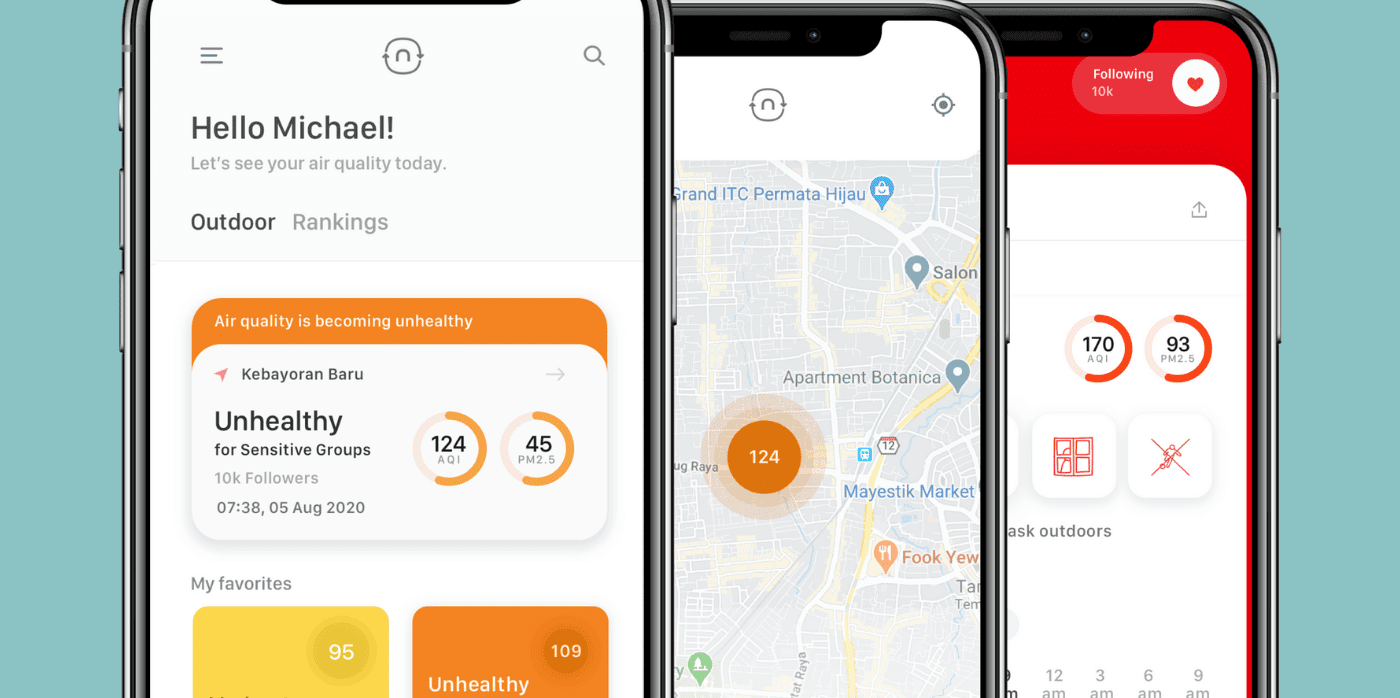
Spotted: The World Bank estimates that the cost of health damages associated with air pollution exposure worldwide is $8.1 trillion (around €7.7 trillion) – equal to 6.1 per cent of global GDP. Indonesia has some of the world’s most polluted air, a public health challenge that led clean air technology experts Nafas to set up networks of local air sensors to help communities better manage their health.
The Nafas app is free to use and provides real-time data on the current quality of the air. Users set their preferred locations and can sign up for alerts when conditions change. Using a green, yellow, and orange colour-coding system, Nafas makes it easy for families to decide when to travel or spend time outside. For users interested in more detail, the platform also provides in-depth articles by experts covering the latest air quality news and research.
Nafas combines its proprietary technology with Airly air sensors to build its network. Airly sensors are designed for outdoor use and are robust enough to withstand high temperatures and significant quantities of rain. Nafas experts calibrate each sensor for its particular location, and the company invites businesses and other organisations to financially support and physically host a sensor.
From schools and transport to retail and hospitality, all industries are affected by the health of their employees and customers. With more than 180 sensors already installed in Jabodetabek, Nafas is well on its way to providing hyperlocal air quality information for neighbourhoods and families. The company plans to continue expanding its network to increase the density of its coverage and its ability to map changes across some of the country’s most populous cities.
Air quality has become so poor that innovators are creating cleaning products for every area of life. Examples in Springwise’s database include light-sensitive concrete that cleans the air in road tunnels and a lampshade coating that combines with pollutants to transform them into harmless compounds.
Written By: Keely Khoury

